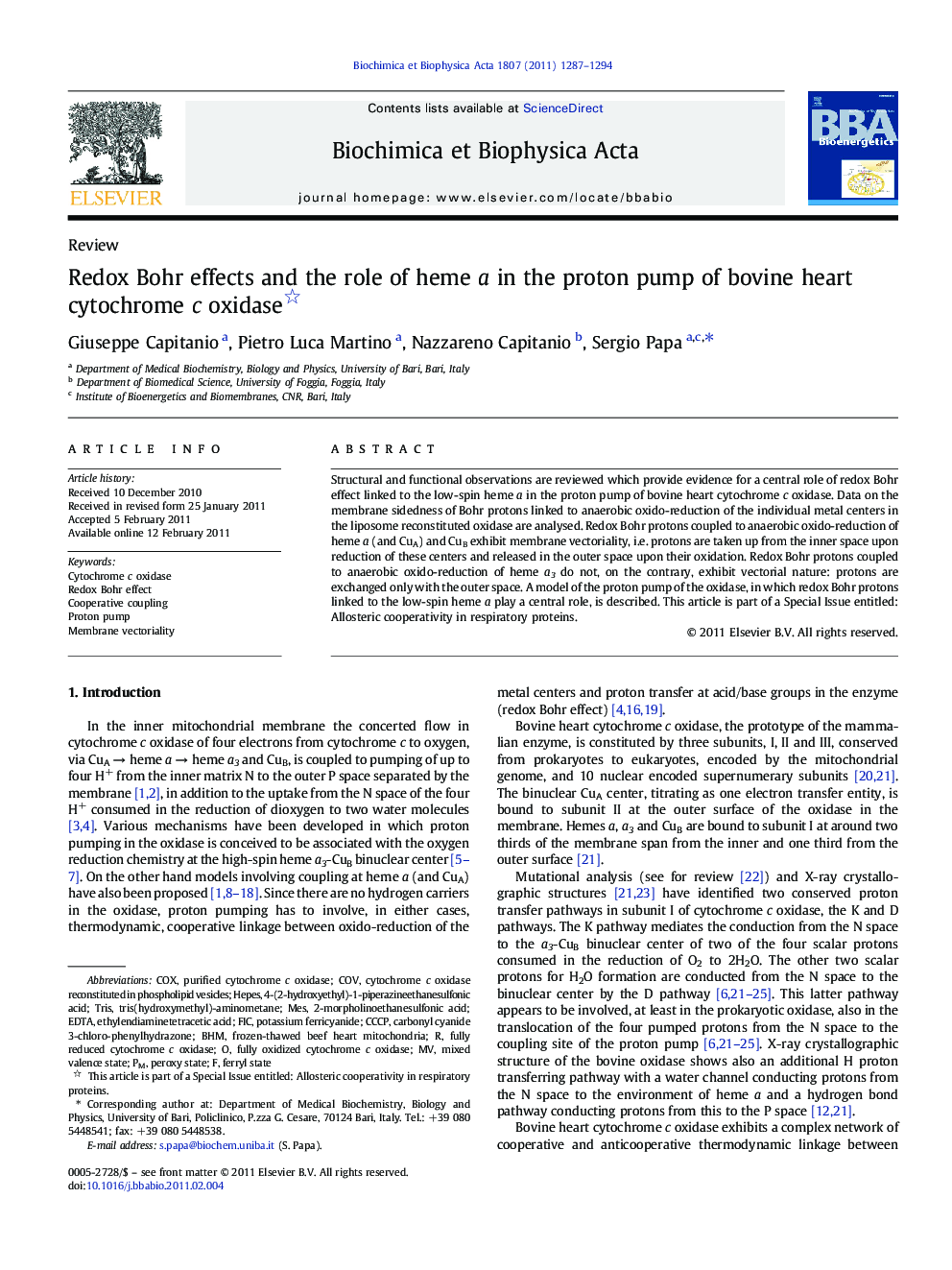| Article ID | Journal | Published Year | Pages | File Type |
|---|---|---|---|---|
| 1942591 | Biochimica et Biophysica Acta (BBA) - Bioenergetics | 2011 | 8 Pages |
Structural and functional observations are reviewed which provide evidence for a central role of redox Bohr effect linked to the low-spin heme a in the proton pump of bovine heart cytochrome c oxidase. Data on the membrane sidedness of Bohr protons linked to anaerobic oxido-reduction of the individual metal centers in the liposome reconstituted oxidase are analysed. Redox Bohr protons coupled to anaerobic oxido-reduction of heme a (and CuA) and CuB exhibit membrane vectoriality, i.e. protons are taken up from the inner space upon reduction of these centers and released in the outer space upon their oxidation. Redox Bohr protons coupled to anaerobic oxido-reduction of heme a3 do not, on the contrary, exhibit vectorial nature: protons are exchanged only with the outer space. A model of the proton pump of the oxidase, in which redox Bohr protons linked to the low-spin heme a play a central role, is described. This article is part of a Special Issue entitled: Allosteric cooperativity in respiratory proteins.
Graphical abstractFigure optionsDownload full-size imageDownload high-quality image (109 K)Download as PowerPoint slideResearch Highlights► In bovine cytochrome c oxidase redox transitions of metal centers result in Bohr H+ effect. ► Redox Bohr H+ coupled to heme a (and CuA) exhibit membrane vectoriality. ► Heme a plays a central role in the proton pump of COX.
